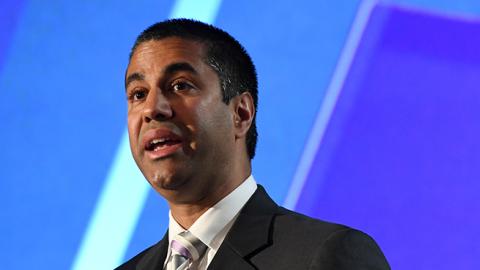A generation ago, television consisted of a handful of national broadcast networks and their local affiliates, broadcast over the air on a scheduled basis and accessed via the family room set. In 2017, television is no longer synonymous with such over-the-air broadcasts. Even apart from the rise of cable and satellite, television increasingly means on-demand content from Netflix, Hulu, iTunes and Amazon, accessed via Internet Protocol on smart phones, tablets and smart TVs. With social media, citizen journalism and the Drudge Report as go-to sources for television newscasts, broadcasters and newspapers are no longer the pre-eminent information purveyors.
Despite this revolution, federal regulation remains an anachronism, imposing unique burdens on broadcasters to alleviate diversity" concerns arising from the spectrum license scarcity of a bygone era. To make matters worse, groups on the left have relentlessly opposed FCC Chairman Ajit Pai's efforts to level the regulatory landscape — most recently by "opposing his reinstatement of the "UHF discount" to the national broadcast ownership cap.
Under the cap, a single owner of broadcast channels is prohibited from exceeding a maximum national audience reach. Promulgated by the FCC in 1985, the cap is a remnant of the Communications Act's system of regulating spectrum licensees in their own category and treating them as information "gatekeepers."
But the media marketplace is more diverse than ever, and broadcast licensees do not merely compete among themselves for viewers and advertising dollars but against cable, satellite and Internet-based competitors. Notwithstanding the ability of these non-broadcast entities to reach the entire national audience, ownership limits do not apply to them. The only other companies under similar burdensome rules are newspapers — an absurdity given the financial struggles of that industry.
As a first step in modernizing the FCC's outdated ownership rules, Chairman Pai announced the reinstatement of the "UHF discount," a rule that relaxes the national audience limit. In the same 1985 FCC order that introduced the national cap, the Commission counteracted the cap by allowing companies to "discount" their audience reach for channels broadcasting in the UHF spectrum (which were then technically inferior to VHF channels) by 50 percent, thereby allowing them to own more broadcast channels than otherwise permitted.
The marketplace has changed since the cap was first introduced, and the ownership limit has increased over the years, with Congress setting the national audience threshold at 39 percent in 2004. Even though UHF stations are no longer technically inferior to their VHF counterparts, the UHF discount remained part of Congress' calculus in determining the national audience cap. Nonetheless, the previous FCC under former Chairman Tom Wheeler abolished the discount on the basis of UHF technical advantage — without considering the effect on the national ownership rule and contrary to congressional intent.
A coalition of groups led by the misleadingly named Free Press has asked the United States Court of Appeals for the D.C. Circuit to vacate and reverse the FCC's reinstatement of the UHF discount. In addition to parroting Chairman Wheeler's immaterial technical argument, Free Press has argued that the discount promotes media consolidation and therefore harms viewpoint diversity
But empirically studies have shown that consolidation does not reduce viewpoint diversity. Editorial viewpoints are primarily driven by the views of the audience — not those of the owners. More importantly, by limiting the ability of local broadcasters to pool their resources and achieve economies of scale through cross-ownership, current policy hurts their viability and forces them out of business — and in turn reduces media diversity.
Perhaps Free Press is disingenuous in championing diversity. After all, Free Press co-founder Robert McChesney has advocated purging particular viewpoints from the marketplace of ideas, having stated "[w]e need to do whatever we can to limit capitalist propaganda, regulate it, minimize it, and perhaps even eliminate it." By pursuing increasingly tighter regulation and a toxic environment for free enterprise, he hopes to "remove brick by brick the capitalist system itself" and ultimately trigger government ownership of the communications industry.
Opposing media consolidation for its own sake is irrational and counterproductive. Those who support the survival of local broadcast television should applaud Chairman Pai's reinstatement of the UHF discount and reject Free Press' discriminatory agenda. Moreover, the FCC should continue to liberalize ownership rules — at both the national and local level and for both broadcasters and newspapers. The UHF discount order is an important first step in restoring regulatory fairness, and the FCC should not be deterred by insidious campaigns designed to harm free enterprise.

















